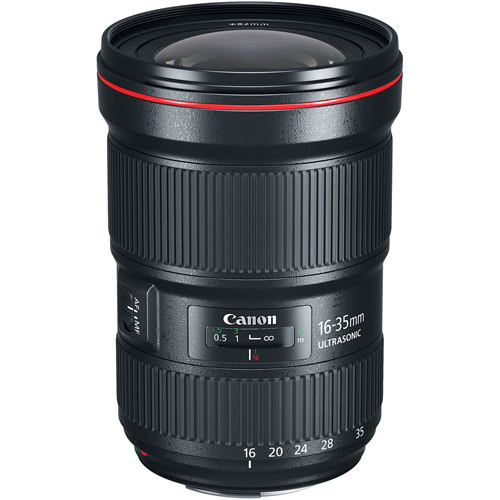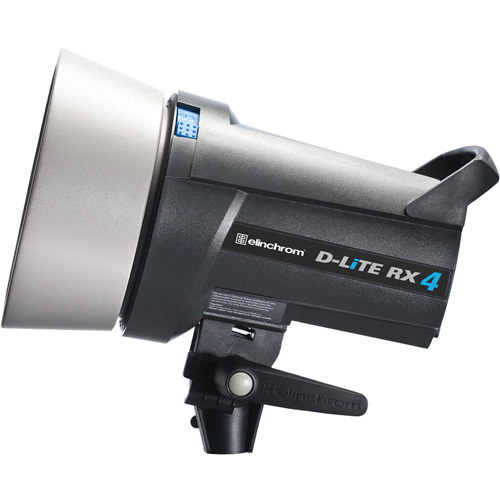[ad_1]
As you’re doing your holiday shopping, it can be a bit daunting evaluating all the numerous options out there. To help, we’ve put together a complete guide of all the best cameras, lenses, lights, drones, and accessories.
Best All-Around Cameras
Canon 5D Mark IV

The 5D Mark IV is the latest update in Canon’s popular line of full-frame cameras, which are the bread and butter workhorses for a lot of photographers. It received a decent bump in resolution (30.4 MP), dual-pixel autofocus, and highly improved file latitude.
Nikon D850

The latest in Nikon’s high-resolution offerings, the D850 couples a gorgeous 45.7-megapixel sensor with a ludicrous continuous rate of 9 FPS, along with an 8K time-lapse feature and strong ISO performance.
Sony a7R III

Sony built the a7R III around the a7R II’s sensor, managing to pull another stop of dynamic range out of it and adding a range of features sure to make photographers happy, including a doubled frame rate (10 fps), improved Eye AF, an AF joystick, and dual card slots.
Fujifilm X-T2

The X-T2 is an excellent option for users looking for professional-level results in a compact form, featuring the stellar Fuji lens offerings, a 24.3-megapixel sensor, improved autofocus, dual slots, and Fuji’s lauded film simulations.
Best Entry Level Cameras
Canon 80D

The Canon 80D is an excellent step up from the company’s most basic offerings, including more advanced autofocus and video features, a 24-megapixel sensor, and a 7 fps continuous rate.
Nikon D7200

With a 24-megapixel sensor, no optical low-pass filter, 51-point AF system, built-in Wi-Fi, and 6 fps shooting, the Nikon D7200 is a great option for beginners that can take them well into the semi-pro realm.
Sony a6300
 Featuring a 24-megapixel sensor, OLED EVF, 11 fps shooting, internal 4K, and a highly regarded AF system, the Sony a6300 is a small beast of a camera.
Featuring a 24-megapixel sensor, OLED EVF, 11 fps shooting, internal 4K, and a highly regarded AF system, the Sony a6300 is a small beast of a camera.
Fujifilm X-T20

The X-T2’s little sibling, the X-T20 features the same 24-megapixel sensor, up to 14 fps with the electronic shutter, a 91-point AF system, and Fuji’s highly regarded ergonomics.
Best Prime Lenses
Prime Super Wide: Sigma 20mm f/1.4 DG HSM Art

The widest f/1.4 full-frame lens in the world, this Sigma is certainly unique. With a minimum focusing distance of 10.9 inches, a nine-blade aperture, and that crazy maximum aperture, you can create some strikingly unique images with this lens.
Prime Wide: Canon EF 35mm f/1.4L II

We were big fans of this lens in our review: it’s sharp, has fast and accurate autofocus, L-series ruggedness, and features Canon Blue Spectrum optics.
Prime Standard: Sony Planar T* FE 50mm f/1.4 ZA Lens
 With a declickable aperture, excellent AF performance, dust and moisture resistance, 11-blade circular diaphragm, and Zeiss optics, this lens is a beast.
With a declickable aperture, excellent AF performance, dust and moisture resistance, 11-blade circular diaphragm, and Zeiss optics, this lens is a beast.
Prime Tele: Sony FE 85mm f/1.4 GM Lens
 Reviews of this lens have been overwhelmingly positive, and with a declickable aperture, lauded AF performance, dust and moisture resistance, an 11-blade circular diaphragm, and outstanding image quality, that’s no surprise.
Reviews of this lens have been overwhelmingly positive, and with a declickable aperture, lauded AF performance, dust and moisture resistance, an 11-blade circular diaphragm, and outstanding image quality, that’s no surprise.
Prime Super Tele: Canon EF 300mm f/2.8L IS II USM

This is of course more a specialty lens for sports and wildlife shooters, though it can also work for portraiture in certain situations. Nonetheless, like all Canon super telephotos, it’s amazingly sharp, built like a tank, and offers unbelievable AF performance coupled with excellent image stabilization. Simply put, it’s an outstanding lens.
Most Innovative/Interesting Prime: Mitakon Zhongyi Speedmaster 50mm f/0.95 Lens

This lens really needs no introduction as to why it’s so interesting. With that insane maximum aperture, you can create some really unique photos with it. It’s manual focus only, but with the great focus aids of the Sony line, it’s not too hard to adjust to that. There are also versions for many other mounts.
Best Zoom Lenses
Zoom Wide: Canon EF 16-35mm f/2.8L III USM Lens

Canon’s third iteration of its wide-angle zoom is a real winner. With dramatically improved corner sharpness over its predecessor, dust and water resistance, and a constant f/2.8 aperture, it’s an awesome option for landscape, wedding, and event photographers.
Zoom Standard: Canon EF 24-70mm f/2.8L II USM Lens

If you had to own one lens that would effectively cover almost any situation you might find yourself in, a 24-70mm would be a good choice. Canon’s is sharp, has excellent autofocus performance, and is highly resistant to the elements, making it a great choice for photographers of all genres.
Zoom Tele: Nikon AF-S NIKKOR 70-200mm f/2.8E FL ED VR Lens

Many photographers build entire careers using two lenses: a 24-70mm and 70-200mm. Nikon’s is highly lauded for its autofocus, vibration reduction, and excellent image quality.
Alternate Zoom Tele: Tamron SP 70-200mm f/2.8 Di VC USD G2 Lens
 The Nikon 70-200mm lens is a great option, but it’s also rather expensive. We pitted it alongside the Tamron SP 70-200mm f/2.8 Di VC USD G2 Lens in this review, and the results were very good. Plus, the Tamron is half the price.
The Nikon 70-200mm lens is a great option, but it’s also rather expensive. We pitted it alongside the Tamron SP 70-200mm f/2.8 Di VC USD G2 Lens in this review, and the results were very good. Plus, the Tamron is half the price.
Zoom Super Tele: Fujifilm XF 100-400mm f/4.5-5.6 R LM OIS WR Lens

Fuji’s super tele zoom gives you the equivalent of 150-600mm in full-frame coverage. As their bodies have gained increasingly better autofocus performance, they’ve become viable options for many different genres, and Fuji’s corresponding super tele zoom offers all the requisite needs: good autofocus performance, weather resistance, image stabilization, and excellent image quality.
Most Innovative/Interesting Zoom: Canon EF 11-24mm f/4L USM Lens

We were big fans of this lens in our review. It’s one of those lenses that can instantly enable you to get images other photographers can’t, and it’s an absolute blast shooting with it. Build quality and image quality are both stellar.
Storage
Best Memory Cards: SanDisk

They’re fast and reliable, and you can never have enough memory cards as a photographer.
Best Hard Drives: Western Digital
I personally use Western Digital for all my hard drives and have never had performance or reliability issues. They also have some nifty features, like automatic memory card backup in certain models.
Portable Drive: Samsung T5

With lightning-fast connectivity, hardware encryption, USB 3.1, and a ludicrously small footprint, the Samsung T5 is the perfect travel drive for demanding photo video work.
Lighting
Studio Lighting High-End: Profoto D2 1000Ws AirTTL Monolight
 With a 1,000 Ws output and 300 W modeling lamp, the Profoto D2 has ample power to spare. It features a built-in AirTTL receiver, fast recycling times, an ultra-short 1/50,000 freeze mode duration, 20 fps burst, 10-stop range, and HSS of up to 1/8,000 s, plus you get compatibility with Profoto’s deep library of modifiers.
With a 1,000 Ws output and 300 W modeling lamp, the Profoto D2 has ample power to spare. It features a built-in AirTTL receiver, fast recycling times, an ultra-short 1/50,000 freeze mode duration, 20 fps burst, 10-stop range, and HSS of up to 1/8,000 s, plus you get compatibility with Profoto’s deep library of modifiers.
Studio Lighting Budget: Elinchrom D-Lite 400W/s RX 4 Flash Head

The Elinchrom D-Lite RX 4 is a great option with good power and a list of features that can make it an excellent bridge light for those starting out, including a built-in Skyport receiver, 0.35-1.6 s recycling times, 5-stop power range, and auto dumping.

The Siros L kit is an awesome location kit with power to spare. It features a fast-charging battery, quick recycling, speed mode flash duration of 1/18,000 s, a 9-stop range, and built-in wireless. You also get Broncolor’s legendary color temperature control, and with an exposed tube, it takes full advantage of a large range of modifiers.
Location Lighting Budget: Godox AD200 TTL Pocket Flash Kit

With built-in wireless, HSS, TTL support, and a small footprint, the Godox AD200 is a favorite of a lot of photographers looking to travel light and still do on-location work.
Most Useful Modifier: Broncolor Para 133 Reflector Kit With Focusing Tube

The Broncolor Para 133 is one of the versatile lighting modifiers out there, with its true parabolic shape creating a beautifully sculpting light and the focusing rod feature allowing one to change the hardness and contrast of the light on the fly.
Most Useful Location Modifier: Westcott 32″ Rapid Box Duo Speedlite Modifier

This is a great option for wedding or portrait photographers using speedlights. With a double shoe mount bracket, you can put two speedlights in the octabox to help up the power, while the built-in tilt bracket makes it easy to angle as needed, and the double diffusers make it easy to soften the output. It comes with an included case and is easy to set up and break down (I own one myself).
High-End Speedlight: Canon Speedlite 600EX II-RT
 Canon’s flagship speedlite is powerful, has a built-in wireless transceiver with great range, TTL, a large zoom range, and HSS, plus it runs on standard AA batteries. Mine has never missed a pop and is still going strong.
Canon’s flagship speedlite is powerful, has a built-in wireless transceiver with great range, TTL, a large zoom range, and HSS, plus it runs on standard AA batteries. Mine has never missed a pop and is still going strong.
Budget Speedlight: Yongnuo Speedlite YN600EX-RT II for Canon Cameras

Once I bought the Canon version of this and fell in love with it, I bought four of the Yongnuo version for a little over the price of one Canon version. Performance has been just as good for me, and I’ve had no issues.
Aerial
Entry Drone: Mavic Pro

Yes, the Spark is neat, but I recommend the Mavic Pro. It’s nearly as portable, and for professional work, you get serious upgrades, like the ability to shoot in raw, 4K, more flying time, and more.
Intermediate Drone: Phantom 4 Pro

The Phantom 4 Pro is the sweet spot of drones in my opinion. The upgraded sensor size and resolution make a noticeable difference in image quality, while you also gain higher bit rates, mechanical shutter, variable aperture, and more collision sensors. If you’re looking to make professional-level work without breaking the bank, this is the model to get.
Professional Drone: Inspire 2

For true cinema work, the Inspire 2 is where it’s at. With your choice of gimbal cameras and lenses, you’re not limited to a certain focal length, and with an advanced set of features for professionals, there really isn’t much it can’t handle.
Miscellaneous
Best Tablet: Wacom Intuos Pro Creative Pen Tablet (Medium)
Simply put, we’re fans of it. Nothing will change your post-processing workflow quite like a good tablet, and the medium version is ideal for most photographers. It’s accurate, responsive, and comfortable.
Wild card: iPad Pro

The iPad Pro is a dream to work with, as we detailed in our review. It’s responsive, the display is a dream, and culling and editing on the go with the Apple Pencil make it a complete mobile workflow solution.
[ad_2]
Original Source Link

